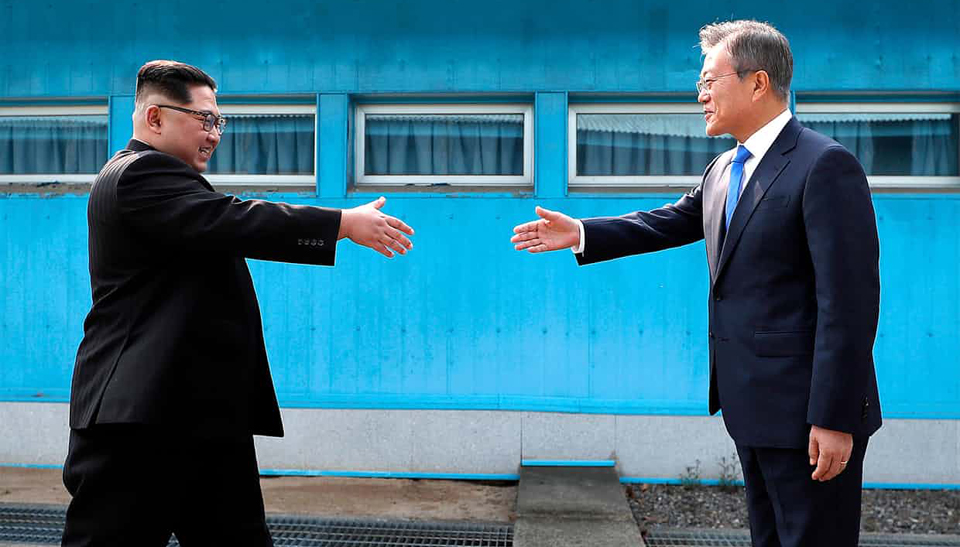
“A new era of peace has begun.” That’s the declaration out of Panmunjom today, where the leaders of North and South Korea—Kim Jong Un and Moon Jae-in—met in a historic summit at the Demilitarized Zone which separates their two countries. In a joint statement, Kim and Moon said their governments will cease all hostile acts against one another. Outlining measures the two governments intend to take to repair relations between them, they said officially ending the Korean War is “a historical mission that must not be delayed any further.”
It’s an instance of détente 65 years in the making. Since 1953, when fighting on the peninsula ended in a ceasefire, North and South Korea—and their military allies—have remained technically at war with one another. The Kim-Moon summit is the most concrete step toward lasting peace in more than half a century. And, despite Donald Trump’s attempt to claim credit for the breakthrough, it is entirely the work of the Korean people themselves, not his bullying.
President Moon was elected last year as a peace candidate, succeeding Park Geun-hye—daughter of assassinated dictator Park Chung-hee and advocate of ratcheting up military tensions. With their votes, the people of South Korea overwhelmingly endorsed Moon’s contemporary rendition of the old “Sunshine Policy” of reconciliation with the North.
Kim Jong Un, meanwhile, has made several substantial overtures for peace recently. He has ordered a cancellation of the ballistic missile tests which raised the concerns of North Korea’s neighbors and announced a halt to the country’s nuclear weapons development program.
President Xi Jinping in China has no doubt also played a positive role in keeping the channels of communication open with Pyongyang even through the most tense of times and in pushing for the resurrection of the Six-Party Talks negotiation framework.
The outlier in this story has been none other than President Trump. Last fall, he threatened to rain down “fire and fury like the world has never seen” on North Korea. His belligerence has further isolated the U.S. from world opinion when it comes to the issue of peace on the Korean peninsula.
Trump is now reminding everyone that he will meet with Kim as early as next month, but he’s playing catch-up on a path already laid out by others, especially Moon.
If he’s serious about wanting to contribute to securing lasting peace in Korea, he will not only engage in direct talks with the North, but also open negotiations on a final and conclusive peace treaty to end the Korean War once and for all.
And of course, there remains the matter of the 25,000 U.S. troops that continue to occupy South Korea. With Seoul and Pyongyang both willing to put the war behind them, it is time for the U.S. to do the same.
It’s time to bring the troops home.












Comments